Resources for
Patients
and Journalists
What is Pharmacovigilance?
Objectives of Pharmacovigilance
Understanding the Impact of Pharmacovigilance
Promover la comprensión, la educación y la formación en farmacovigilancia y su comunicación efectiva al público. (Organización Panamericana de la Salud, s.f.)
Improve public health and safety in relation to the use of medicines.
Promote understanding, education, and training in pharmacovigilance and effectively communicate it to the public.
Objectives of Pharmacovigilance
Understanding the core elements of pharmacovigilance and its relevance in public health.
Clearing Doubts
Frequently Asked Questions
Clearing Doubts
Frequently Asked Questions
A medication is a product that cures, alleviates, prevents, or diagnoses diseases. It consists of:
- Active ingredient: The substance responsible for the therapeutic effect.
- Excipients: Substances without therapeutic function that facilitate the administration and preservation of the active ingredient.
The most important link in the chain is the patient, who benefits from the medication's action. Other actors in the drug supply chain include pharmaceutical companies, responsible for research, development, and production of medications; testing laboratories and research institutions, conducting studies and tests to validate medication safety and efficacy; regulators and government entities, overseeing and approving the launch of new medications into the market; distributors and wholesalers, responsible for delivering medications to various points of sale and healthcare; and finally, healthcare professionals such as doctors and pharmacists, who prescribe and dispense medications to patients. Each of these actors plays a vital role in ensuring medications reach those who need them safely and effectively.
Animal: An example of a medication of animal origin is insulin, used to treat diabetes, which was initially obtained from the pancreas of pigs. Before biotechnology, animal insulin was the primary source administered to patients with type 1 diabetes, allowing for the regulation of blood sugar levels.
Vegetal: An example of a medication of plant origin is acetylsalicylic acid, commonly used to treat headaches and derived from the bark of the white willow tree.
Mineral: An example of a medication of mineral origin is calcium carbonate, primarily used as a supplement to treat or prevent calcium deficiency in the body. This mineral is naturally found in rocks and limestone.
Artificial Synthesis: An example of a medication produced through artificial synthesis is paracetamol or acetaminophen, a widely used analgesic and antipyretic to relieve pain and reduce fever. Artificial synthesis refers to the process of manufacturing chemical substances in laboratories through specific chemical reactions using basic raw materials. These substances are not extracted from natural sources but are created by combining and modifying molecules under controlled conditions.
Biotechnological/Biological: In the pharmaceutical context, biotechnological medications are produced using biological systems such as genetically modified cells or bacteria to produce therapeutic molecules. An example of a biotechnological medication is trastuzumab, used in the treatment of certain types of breast cancer.
Generic Medication
A generic medication is a drug created to be identical to a brand-name medication already marketed in terms of its dosage, safety, potency, route of administration, quality, performance characteristics, and intended use. The concept of a generic medication should only be used for chemically synthesized drugs.
The authorization of generic medication is based on demonstrating bioequivalence with a previously authorized medication for which the data protection or patent period has expired, if applicable.
Generic medication must meet all required quality assurances and additionally demonstrate that the active ingredient is absorbed by the body in the same manner as its corresponding original medication.
Biological Medications
Biological medications (also called biologics) can be made from sugars, proteins, living cells, tissues, or a combination thereof. They are made from natural and living sources such as animal and plant cells, and microorganisms like bacteria and yeast.
Biological medications are generally more complex than other medications. Their purification, processing, and manufacturing are often more intricate processes.
Biosimilar Medication
A biosimilar medication is a biological drug that is highly similar to another biological drug (known as the reference medication) that has already been approved by National Regulatory Authorities. While biosimilar medications and reference medications are both made from living organisms, they may be manufactured in different ways and with slightly different substances. For a medication to be called biosimilar, it must be demonstrated to be as safe, as effective, and to work in the same way as its reference medication. Additionally, it must be used in the same manner, with the same dosage, and for the same condition as the reference medication. This is demonstrated through biosimilarity studies.
- Presentation, name, and quantity of the medication
- Route of administration and dosage (how to take the medication and in what quantity)
- Frequency and duration of treatment
- What effects will the medication have on your body?
- Whether the prescribed medication will interfere with other medications you are taking.
- What unwanted or side effects you may experience while taking the medication and what you can do about them.
- Which foods, drinks, or other medications you should avoid while undergoing treatment.
- What to do if you forget a dose of the medication.
- Under what circumstances you should stop taking or consuming the medication.
It is essential to purchase medications only from recognized pharmacies or authorized healthcare establishments. These places guarantee products that have passed rigorous quality controls and comply with health regulations. Avoid buying medications from informal markets, unverified websites, or unauthorized locations, as there is a risk of acquiring counterfeit, expired, or improperly stored products, which can endanger the patient's health. It is always advisable to consult a healthcare professional before purchasing or consuming any medication.
Before consuming a medication, it is vital to carefully review the information on its packaging. Check the expiration date to ensure the product is still safe for use. Additionally, confirm that the name of the medication matches the prescribed one, and review the dosage and usage instructions. It is equally important to ensure that the packaging is intact and shows no signs of tampering or damage, ensuring the medication has not been compromised. Always follow the instructions and consult any doubts with a healthcare professional. Also, ensure it has a sanitary registration number.
Drug interactions occur when two or more drugs administered simultaneously or within a close timeframe act together, modifying or altering their original effect. These interactions can enhance, reduce, or even neutralize the effect of one or both drugs. It is crucial to consider this situation as they can lead to unwanted effects or decrease the effectiveness of the treatment. In some cases, interactions can be dangerous and compromise the patient's health. Therefore, it is essential that healthcare professionals are informed about all the medications and supplements a person is taking to prevent potential adverse events.
It is essential to store medications that do not require refrigeration properly at home to ensure their effectiveness and safety. It is recommended to keep them in a cool, dry place away from direct sunlight, preferably in a closed first aid kit and out of the reach of children and pets. Avoid places with temperature changes, such as the kitchen or bathroom, as moisture and heat can alter the composition of drugs. Additionally, always keep medications in their original packaging with their respective labels for easy identification.
It is important to dispose of expired medications properly. Dispose of them in non-recyclable waste containers at home, ideally in a closed container (bag, box, bottle). Remove all personal information from the containers before placing them in the waste container.
History
Discover the history of pharmacovigilance
Morphine Poisoning
Chloroform Poisoning
Clioquinol Poisoning
Diethylene Glycol Poisoning
Milestones in Drug Regulation
Thalidomide Issues
Pharmacovigilance and Systematic Notification Collection Systems
The Yellow Card Scheme was created in the UK in 1964, and the WHO International Drug Monitoring Program was established in 1968, proposing the creation of an International Drug Monitoring Center.
Practolol Poisoning
Foundation of the World Health Organization (WHO) Collaborating Centre for Pharmacovigilance
Regulatory Authorities
LATIN AMERICA

Argentina
ANMAT (National Administration of Drugs, Food, and Medical Technology).
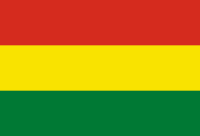
Bolivia
State Agency of Medicines and Health Technology (AGEMED).

Brazil
National Health Surveillance Agency (ANVISA) and Sanitary Surveillance Center (CVS) in São Paulo.

Chile
Public Health Institute (ISP).
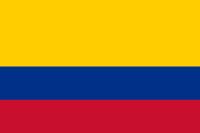
Colombia
National Institute of Food and Drug Surveillance (INVIMA).
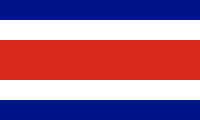
Costa Rica
Ministry of Health of Costa Rica.
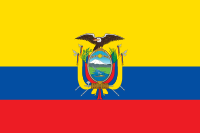
Ecuador
National Agency for Regulation, Control, and Sanitary Surveillance (ARCSA).

El Salvador
National Pharmacovigilance Center - Ministry of Health El Salvador.
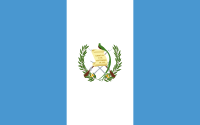
Guatemala
Ministry of Public Health and Social Assistance of Guatemala.
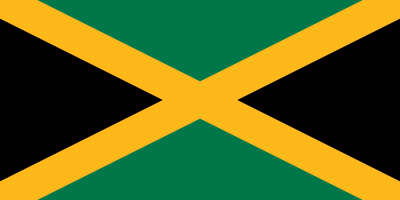
Jamaica
Ministry of Health and Wellness of Jamaica.

Mexico
Federal Commission for Protection against Sanitary Risks (COFEPRIS).
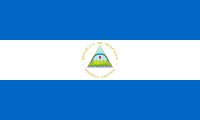
Nicaragua
Ministry of Health of Nicaragua (MINSA).

Paraguay
DINAVISA (National Directorate of Sanitary Surveillance).
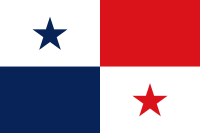
Panamá
Ministry of Health of the Republic of Panama.

Peru
General Directorate of Medicines, Supplies and Drugs (DIGEMID).

República Dominicana
General Directorate of Medicines, Foods, and Health Products (DIGEMAPS).

Trinidad y Tobago
Ministry of Health of the Republic of Trinidad and Tobago.
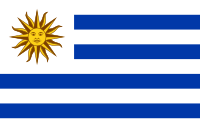
Uruguay
MSP (Ministry of Public Health).
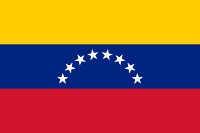
Venezuela
National Center for Pharmacological Surveillance (CENAVIF).
This Pharmacovigilance site does not collect Adverse Drug Reaction Reports.
If you wish to report an adverse effect or technical complaint regarding a pharmaceutical product, please contact your healthcare provider and/or the Health Authorities in your respective country.